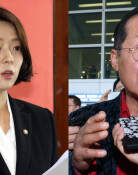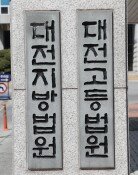Seouls Wilderness
Concrete buildings and asphalt roads abound in Seoul. The city is full of smoke and noise due to urban sprawl and a growing number of cars. But at the same time some areas of Seoul are still known for their wild forests and animals.
Oh Chung-hyeon, an ecologist and professor at Dongguk Universitys forest and resource department, takes us on a guided tour of Seouls wilderness.
In Changdeokgung and Jongmyo in a part of downtown Seoul, trees such as white oak, which are rare in the city, form thick forests. These wild forests are well preserved since there are fewer humans there. Lets take a cultural heritage trip to the wild forests, which once were the domain of the Joseon Dynasty.
Secret Forests for a King-
On Sunday afternoon, bulbuls can be seen coming to Changdeokgung to eat tree fruits and sing. Flowering cherries, which bloom in the spring, are spreading their thin branches.
When you pass Geumhomun, the west gate of Changdeokgung, and enter the northbound path, which is off-limits to the general public, you can see the backyard of the king.
The backyard had long been off-limits, thus its nickname: the secret garden. About 70 percent of the backyard, which covers 433,000 square meters, is off-limits. The backyard is an ecological treasure trove with around 130 types of trees, some of which are more than 200 years old.
After a 15-minute walk, oriental oaks and birch trees in sunny areas appear.
Oriental oak, the source of cork, has bark that looks like a dry, cracked rice paddy, but is elastic. The area near a corner is surrounded with white oaks. The trees have straight and firm grains. Yellow leaves hang from the 15-meterlong branches. Professor Oh said, White oaks grow well on the firm soil with an appropriate amount of humidity. The flat soil of the palace provides good growing conditions for the trees.
Sacred Oak Tree Forest Jongmyo-
The forest of Jongmyo, which houses the royal shrine of the 500-year-old Joseon Dynasty, is monotonous but thick. Jongmyo is at an important location that connects the ecosystems of Mt. Bukhan and Mt. Nam. But its connection with Changdeokgung was severed when Yulgokno was built during Japanese colonial rule.
The trees of Jongmyo are different from those of Changdeokgung as a result. Changdeokgung has both thick and thin trees. In contrast, the trees of Jongmyo are as thick as two men can encircle with extended arms. Their bark is firmer and has deeper cracks.
The deep soil of Jongmyo offers good conditions for the growth of oriental white oaks. Below the oaks, there are young snowbell trees. Professor Oh said, In the 1980s when air pollution began to get worse, the white oaks began to be replaced by snowbell trees that resist air pollution better. I wonder whether we will see tall oak trees surrounding Jeongjeon and Yongnyeongjeon in 100 years.
You can contact Changdeokgung at 02-762-0648, and Jongmyo at 02-765-1095.
gaea@donga.com




![“배달 시키면 버렸는데”…피자 가운데 ‘그것’ 200% 활용 꿀팁 [알쓸톡]](https://dimg.donga.com/c/138/175/90/1/wps/NEWS/IMAGE/2026/01/07/133111146.3.png)


